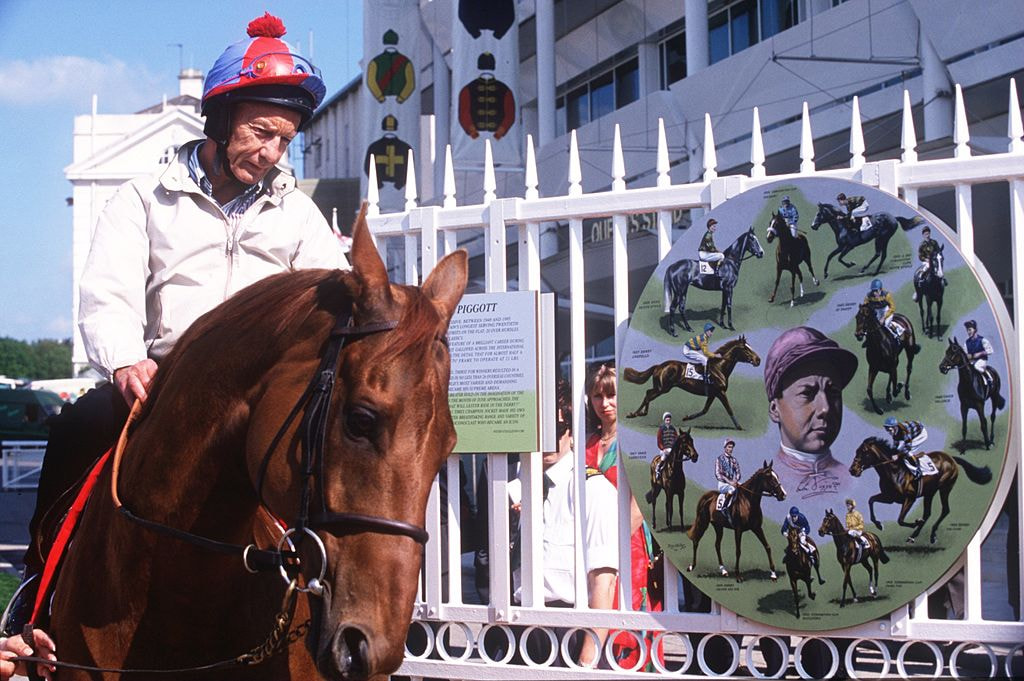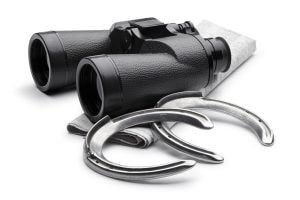Great Sporting Comebacks – Counting Down Six of the Best
“It isn’t the mountains ahead to climb that wear you out; it’s the pebble in your shoe,” Muhammad Ali once said. Refused a boxing licence following his 1966 decision to reject the draft into the US Army and fight in the Vietnam War, the boxer knew all about adversity and comebacks. Arguably, Ali missed the best five years of his career but returned from the abyss to become a three-time World Champion.

Following jail time, Lester Piggott made a remarkable comeback to win a Breeders’ Cup race and a 30th British classic. ©Phil Cole/ALLSPORT
Winning may be everything, but doing so against the odds turns a spectacle into an unforgettable memory recited and referenced for decades. Here, we have listed a selection of the greatest-ever sporting comebacks. From two legs to four wheels, racket sports to golf, all have produced an amazing spellbinding comeback at some point in time.
Bob Champion and Aldaniti National Heroes
In 1979, jockey Bob Champion was at the top of his game. But a cancer diagnosis looked set to cut his career, and possibly his life, short. In November of the same year, Aldaniti, the horse he had partnered to finish third in the Cheltenham Gold Cup and Scottish Grand National, sustained a serious leg injury.
It was unlikely either would ever make a return to competitive action. Aldaniti was off the racecourse for over a year while Champion underwent surgery and chemotherapy. But, remarkably, in a back-from-the-brink fairytale that was later made into a film, the pair won the 1981 Grand National.
After the race, both horse and rider made countless public appearances, and in 1983, the rider formed the Bob Champion Cancer Trust. Now in his 70s, the National hero continues to ‘Champion’ the charity and has raised millions of pounds for cancer research.
Greg LeMond Shot the Tour to Bits
In the summer of 1986, Greg LeMond became the first American to win the Tour de France. Second the year beforehand and only 25, he looked set to dominate the sport for years to come. However, the following spring, LeMond was led on a hospital bed with 60 shotgun pellets lodged in his body, and his life was on the line.
The shooting was an accident sustained during a turkey hunt with family members. LeMond’s career looked over. Time is a healer, but with 35 shotgun pellets still in his body – including three in the lining of his heart and five more embedded in his liver – a return to action in 1988 initially proved disastrous and was then abandoned.
Nevertheless, dropped by his 1986 winning team and defying cycle racing bookmakers 25/1 odds, LeMond returned to what is described as “the world’s most gruelling athletic contest” in 1989 and won the race for a second time.
The final stage was one of the greatest ever witnessed as LeMond had to make up a 50-second deficit on race leader Laurent Fignon in a 24.5-kilometre time trial between Versailles and the winning line on the Champs-Élysées. The eight-second winning margin remains the closest Tour de France finish in history.
Niki Lauda, the Phoenix Like Champion
Niki Lauda, 1972’s British Formula 2 champion, progressed to Formula 1 and won his first World Championship title in 1975. A second title beckoned in 1976 as he won five of the season’s first nine races and collected an additional three podium finishes.
However, his Ferrari swerved off the track at that year’s German Grand Prix. Hitting a barrier and bursting into flames, horrified spectators watched as the Austrian was trapped in his car’s burning wreckage for nearly a minute before rescue came from fellow drivers and track marshals.
Lauda sustained severe injuries: third-degree burns on his head, face, and ears, plus damage to his lungs due to toxic smoke inhalation. Conscious when pulled from the wreckage, he later lapsed into a coma and was read his last rites at the hospital.
Despite bandaging and wounds that were still healing, he returned to Formula 1 at the Italian Grand Prix just six weeks later in an attempt to retain his title in a battle against James Hunt that went down to the final race of the season.
Lauda returned to competitive racing for the 1977 Formula 1 season and went on to win that year’s World Drivers’ Championship (and the 1984 title) despite his devastating accident which had left him permanently scarred both inside and out.
Woods Masters a 15th Major
Tiger Woods’s victory in the 2019 Masters was described as the “comeback of the decade” by the World’s media. Eleven years had passed since the legend last collected a ‘major’ and, as Ewan Murry, writing for the Guardian, summarised, “His [Woods] slide towards oblivion appeared terminal. An athlete formerly so flawless had been dragged – partly by himself – to the depths of personal and physical despair.”
Four back surgeries in three years, an arrest for driving under the influence of alcohol or drugs, a high-profile and messy divorce, plus shocking revelations about his private life had all taken their toll on Tiger. He even fell out of the World’s top 1,000 at one point.
In 2019, a seemingly washed-up Woods – who had won his first Masters title by 12 strokes 22 years earlier – held his nerve (when those around him seemingly lost theirs) and won, by a single shot, the competition for a fifth time. Dustin Johnson, Brooks Koepka and Xander Schauffele shared second. It was Woods 15th major and, arguably, the most thrilling comeback in American sports history.
Stabbed in the Back Seles Came Back
Aged 16, Yugoslavian-born Monica Seles became the youngest-ever French Open winner when taking the title in 1991. She would win the French Open twice more – plus take the Australian Open three times and the US Open – all before the age of 20.
With an additional appearance in the Wimbledon final, her tennis domination looked set to last well into the 1990s. However, at the beginning of 1993, when still a teenager, Seles was the victim of a knife attack by a crazed tennis fan who was obsessed with her playing rival, Steffi Graf.
The assault happened as Seles sat during a break between games in a match against Magdalena Maleeva at the Citizen Cup in Hamburg, Germany. According to police, her attacker intended to severely injure Seles so that she would be unable to play tennis and Graf would regain her world number one status.
The single but deep stab wound only just missed Seles’s spinal cord. Thankfully, she managed to recover from her physical injury relatively quickly. However, deep psychological scars meant she fell into depression and suffered from an eating disorder. She did not play competitive tennis for more than two years.
In a remarkable and unlikely autumn 1995 return, Seles won the Canadian Open. Afterwards, against all odds, she won her fourth Australian Open. It capped an incredible comeback but was also Seles’ last Grand Slam title.
A final appearance in the 1996 US Open followed, but Seles struggled to recapture her best form on a consistent basis afterwards. Her career slowly regressed following the 1998 passing of her father (and former coach) and a final Grand Slam appearance in that year’s French Open.
Piggott, at 55, Returns From Jail to Win Breeders Cup
Lester Piggott had a remarkable career with over 5,000 winners and 29 British classics on his CV. The 11-time champion jockey called time on race-riding in 1985 to become a trainer. However, this second career was cut short in 1987 when he was convicted of tax fraud and sentenced to three years in jail.
Stripped of his OBE and spending 366 days in jail, Piggott, then aged 55, made the extraordinary decision to return to race riding at the end of 1990. Just ten days later, he won the Breeders’ Cup Mile at Belmont Park, New York, aboard Royal Academy.
The legend did not stop there. In 1992, Piggott won his 30th British classic when taking the 2000 Guineas aboard Rodrigo de Triano. A second and final retirement came at the beginning of 1995. In 2021, Piggott was, along with the unbeaten horse, Frankel, honoured as one of the first two entries in the British Champions Series Hall of Fame. His OBE was never returned.



